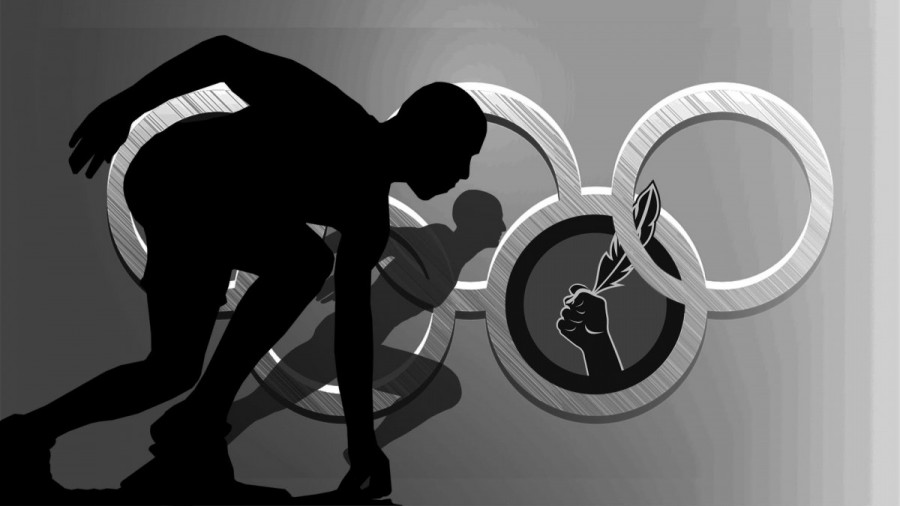How Indigenous Runner Tom Longboat Trailblazed His Way To Legendary Status
No Dream Seemed Too Big for the Small-Town Marathoner
Content Warning: This piece contains mentions of slurs used against Indigenous people.
Nicknamed “The Bulldog of Brittania,” Tom Longboat’s incredible story of beating the odds and silencing critics has made him unforgettable in Indigenous history.
Named “Cogwagee” at birth, Tom Longboat was an Indigenous Olympic athlete and later became a Canadian Expeditionary Force soldier whose achievements will have him forever remembered as a pioneer for his community.
Born in 1886 to an Iroquois family in Ontario, he was raised on a farm with his brother and sister before being forced, like many other Indigenous children at the time, into the residential school system.
The residential school Longboat was sent to in Brantford used military-style training, such as running to discipline their students. He was already familiar with long-distance running thanks to the traditional Haudenosaunee runners of the Iroquois tradition. These runners were used between nations to gather information, communicate and alert them of any oncoming danger.
In a time when long-distance runners drew in massive crowds, Longboat took the long-distance running scene by storm. It took the Iroquois athlete only two years after his first official race, the Victoria Day five-mile race in Caledonia in 1905, to reach the pinnacle of the sport. He went on to win the Boston Marathon in 1907, breaking the two-hour 29-minute record set six years prior. However, his success was always overshadowed by his status as an Indigenous person.
Longboat could never seem to get rid of the racist denominations that were imputed to him. Following his triumph in Boston, one newspaper complimented Longboat’s trainers by calling the athlete “a docile pupil.” Even several years after his career and despite Longboat’s many achievements, the media would still qualify him with unflattering names like “the original dummy” or “a once-talented Redskin.”
Despite the discrimination, Longboat never gave up on being great. He was chosen to represent Canada at the 1908 Olympic games in London, competing as a marathon runner. He never finished the race, many at the time believed he and another runner had been drugged before the event in an attempt to weaken their chances at an Olympic title. Longboat had never been known to deliver such a poor performance before.
After turning professional in 1909 and participating in multiple competitions, including the World Professional Marathon Championship, Longboat started to experience issues in his knees and back. Despite such health concerns being a common occurrence for long-distance runners, the sports press at the time found a way to blame it on Longboat’s ethnic origin, doubling down on calling him lazy and incompetent.
The idea of Longboat being work-shy came partly due to how Longboat followed unconventional training methods. He alternated between heavy training and restful recovery periods, which was different from the persistent intensity most marathoners would train with at the time. Nowadays, professional runners train like Longboat used to, a testimony to how his previously unseen methods were ahead of their time. This, however, didn’t stop Longboat from being called a “lazy Indian” while also constantly being slandered by journalists and former managers alike.
At age 29, Longboat decided to finally call it a career and shortly thereafter, joined the Canadian Expeditionary Force as a dispatch carrier during the First World War. He was trusted with carrying messages along units on the Western Front in France and Belgium.
Throughout his time in the army, Longboat made a name for himself, albeit not for military prowess or combat aptitude. His reputation as a legendary long-distance runner preceded him in the trenches and some joked about him being able to outrun German bullets.
A famous story says that an officer he once escorted to an outpost was having trouble keeping up with Longboat’s fast pace. Complaining, the officer asked Longboat “Who do you think I am? Tom Longboat?” to which Longboat replied “No, Sir. I am.”
Surviving the war, Longboat returned to Canada and worked there until retiring in 1944. He died of pneumonia in 1949 at the age of 62, leaving behind his wife Martha Silversmith and four children.
After he died, Alfie Shrubb, one of Longboat’s greatest rivals, stated that Longboat was “one of the greatest, if not the greatest marathoner of all time.” Posthumously, he was inducted into Canada’s Sports Hall of Fame in 1955 and the Ontario Sports Hall of Fame in 1996, also being named a National Historic Person by the Canadian government.
This article originally appeared in Volume 43, Issue 13, published March 7, 2023.



_600_375_90_s_c1.jpg)
1_600_375_90_s_c1.jpg)
_600_375_90_s_c1.jpg)
